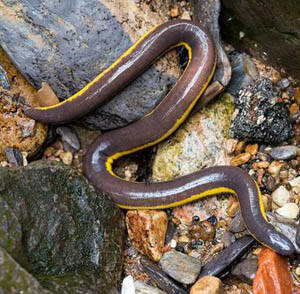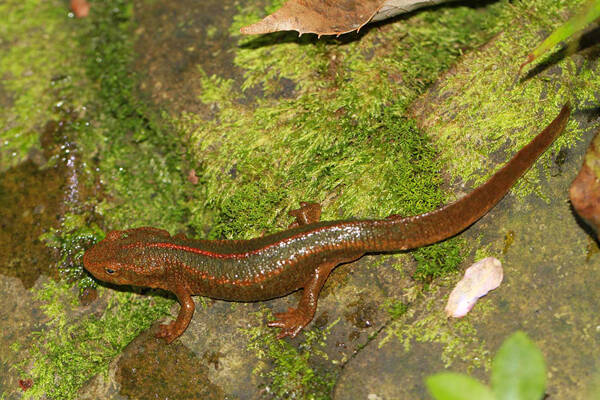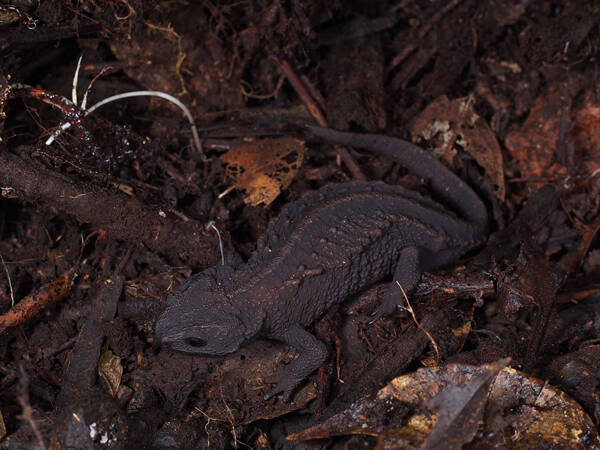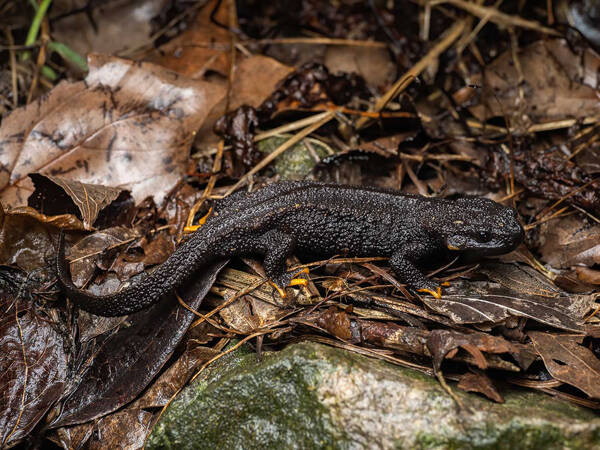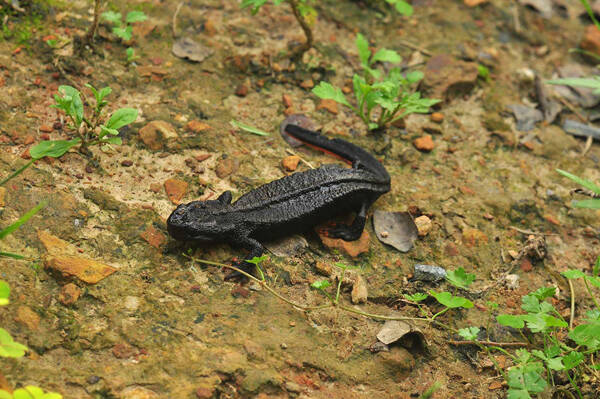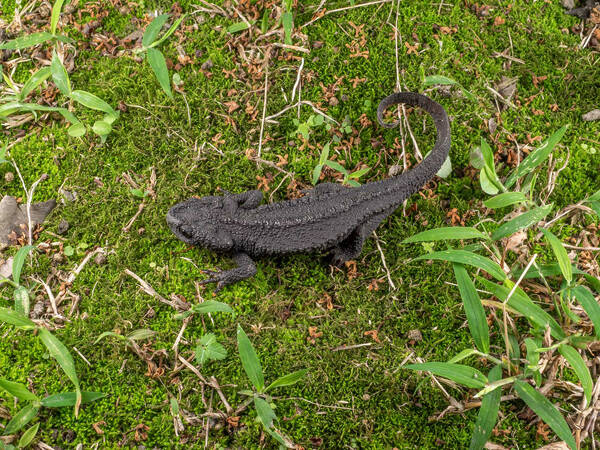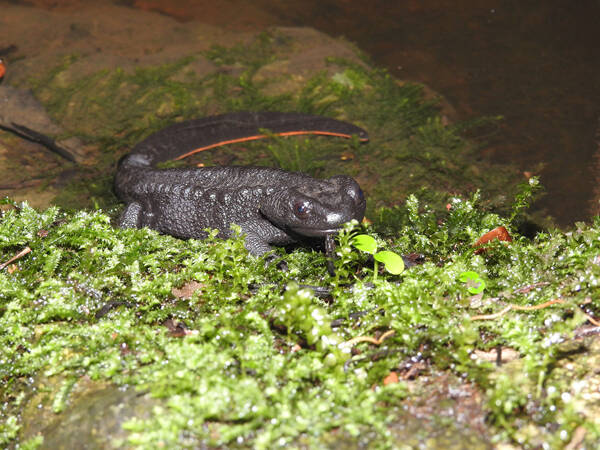Pseudohynobius flavomaculatus
IUCN
LCBasic Information
Scientific classification
- name:Pseudohynobius flavomaculatus
- Scientific Name:Pseudohynobius flavomaculatus, baby salamander, baby salamander
- Outline:Urodela
- Family:Caudata Hynobiidae Pseudohynobiidae
Vital signs
- length:138-189mm
- Weight:
- lifetime:
Feature
When alive, the entire back side is purple-brown with irregular khaki or yellow spots, which are larger on the back and fewer or absent on the rear tail.
Distribution and Habitat
Endemic to China, distributed in Hubei (Lichuan) and Hunan (Sangzhi).
Lives in mountainous areas at an altitude of 1158-2165m, where bushes and weeds grow luxuriantly and water sources are abundant.
Appearance
The head is relatively flat and oval, with the length of the head longer than the width; the snout is rounded and has no lip folds; there is a premaxilla, and the vomerine tooth row is V-shaped. The trunk is nearly cylindrical; the tail fin fold is low and flat, and the end is mostly blunt. The back is purple-brown with irregular yellow or brown-yellow spots, and the shape of the spots varies greatly; the ventral surface of the body is light purple-brown.
Details
The yellow-spotted Hypoderma davidiana lives in high mountainous areas with an altitude of 1100 to 1845 meters. The mountains are covered with thorny bushes, bamboos, and weeds. There are abundant water sources, and the upper reaches of the ditches are mostly swamps. There are many limestone caves in the area, and springs gush out in many places. The climate is mostly rainy and foggy, and the environment is dark and humid. Adult salamanders mainly live in the jungle and live on land. During the day, they live under the moss at the roots of bamboos and bushes, between stone caves or in earth caves. There is a lot of humus on the ground and the soil is soft, so they hide there.
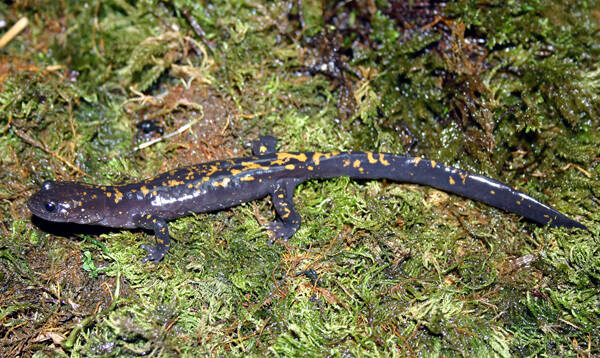
Adult salamanders are more flexible in water than on land, and their body surface is very smooth, making them extremely difficult to catch with bare hands. If you are not careful, they will slip out of your hands and escape. Adult salamanders leave the water and go ashore after the breeding season to move around in the forest. They hide in dark and humid places during the day and go out to move and forage at night. They feed on insects and other small animals, and prey on shrimps in the water. The salamander preys on a variety of small insects and other small animals in the forest, such as myriapods and slugs.
The breeding season of the yellow-spotted hypogyne is mainly around mid-April, and some extend to May. The juveniles may need to go through a winter to complete metamorphosis. During the breeding season, adult hypogyne mostly lay eggs in spring caves or karst caves, and can also be found in streams and ponds at this time.
The yellow-spotted hypogyne mostly feeds on pests, and has a certain preventive effect on forestry pests. In addition, this hypogyne belongs to a genus and species endemic to China, and its number is rare. It is one of the rare amphibians in China, and it has a relatively important significance in the study of the evolution of the tailed amphibian system.
It is listed in the second level of the "List of National Key Protected Wildlife in China".


